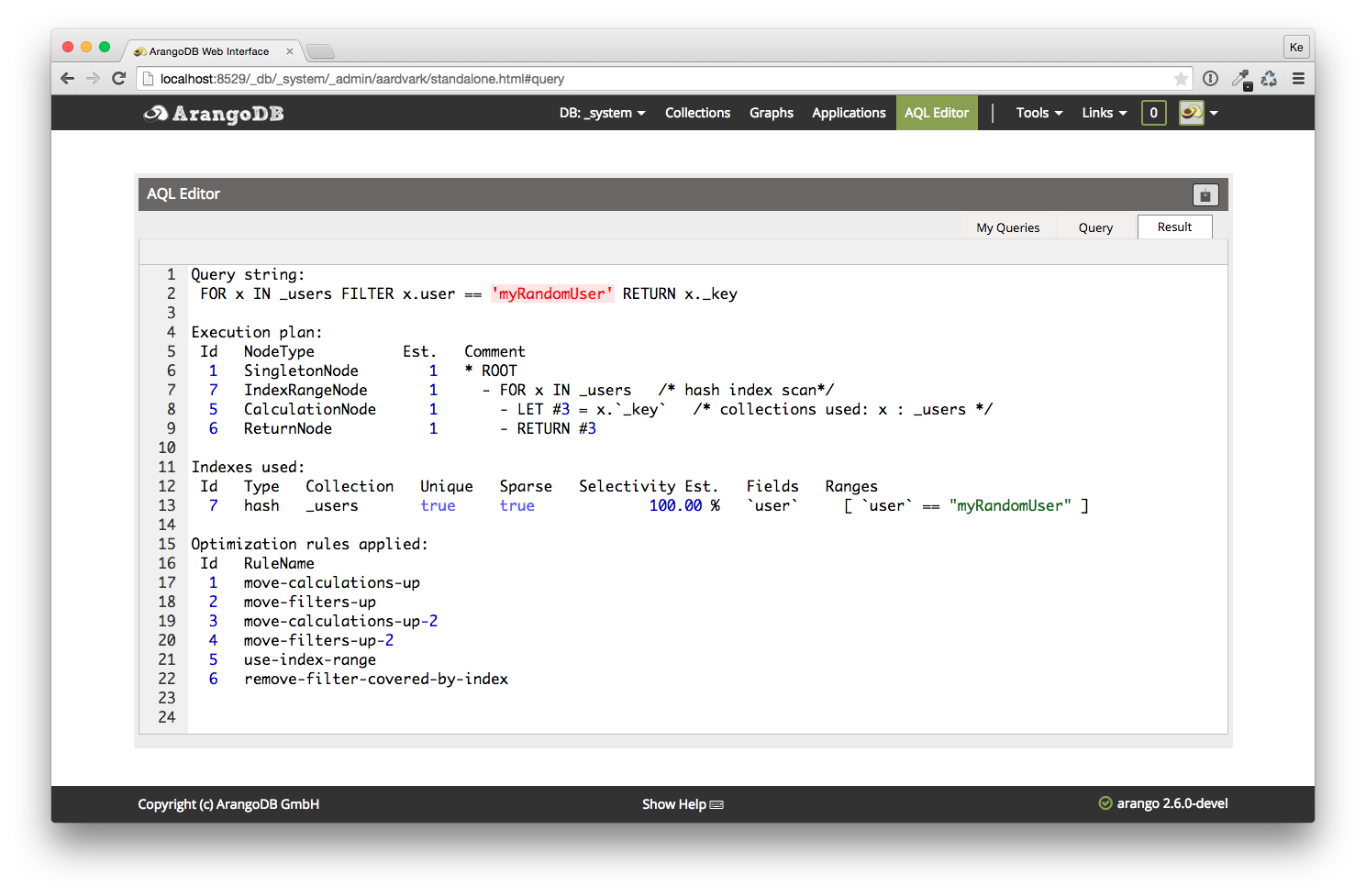

What is the ArangoDB Graph Database Syntax Part 1 - Traversal Python in 10 min.

Graphs model of ArangoDB: Get familiar with the graph data model of the native multi-model database. of the overcommit setting, but in practice this should not cause any issues. Using memory accesses instead of disk accesses is faster and in the database You should not use the following settings unless there are very good for the edge cache and 10 GB for the read buffers if you use graph features. Learn about Data Modeling, Queries, Graphs, Foxx, Deployment, CRUD: Document CRUD (Create, Read, Update, Delete) with AQL and HTTP API Performance Course: Performance Optimization Basics: How to make your queries faster Pattern Matching: Find the best flights between two airports with the lowest total. This also results in no longer needing to perform calculations on. You could instead put a,b,c or node, line, route, or whatever works best for you and your team. If you would like to get up to speed with Graphs, AQL, and running queries queries it is recommended that you use it with all graph queries. These methods can be used to quickly determine if a vertex is connected to other vertices. Please read the chapter about AQL traversals before you continue reading here. Very simple operations can be composed with the low-level edge methods edges, It is recommended to use AQL instead, see the LIMIT operation. degrades to a point where it's no longer suitable for your given use case. performance issues when, in scaling horizontally, you shard a graph through the cluster. When the data-set for a graph exceeds the limits of what you can host on a single traversals can involve many network hops between database servers. TraversalNode: indicates a regular graph traversal, as opposed to a shortest. Each execution plan will contain exactly one SingletonNode as its top node. Within the ArangoDB shell, the _query and _createStatement methods of the db object can tool that we created to generate a more human readable representation. The best option is to make the amount of visited vertices and followed edges as small as possible. It will not do anything and will thus be fast. Database Methods The JavaScript module (traversal module for short) is The preferred way to traverse graphs is with AQL. The different nodes can be upgraded one at a time without incurring a prolonged Edge documents are stored in edge collections and have two additional to store these relations in the database, we can run a query that combines joining and to parentId and no other attributes Return the new edge document (optional).Ĭollection Methods. ArangoDB transaction request from a node.js app returns 403: forbidden. The best way to solve this is to change the data layout a little, since fulltext indices How about looking at the UPSERT command, and only give it instructions for the if it didn't exist. What good is a collection without any collectibles? All asynchronous methods in the ArangoDB driver return promises but you can also pass a node-style callback We've created a new database, but we haven't yet told the driver it should start using it. The User can then choose to remove it from the list.This is a short tutorial to get started with ArangoDB using Node.js. When a unit is removed in cluster mode, The UI will still show this node in his cluster but with an exclamation mark next to it.If a unit was removed while ArangoDB was running in cluster mode, Then both of the units will get in a blocked state. If a unit was added and the model upgraded from 1 to 2 units, then the first unit that was created will be available in standalone mode while the second unit will get in a blocked state. If a model contains 2 units then there are two possible situations on how the charms will behave. This charm uses the default configuration for cluster where every unit will act as DB server and Coordinator.

The ArangoDB charm supports clustering but will need at least 3 units to work in cluster mode. If the root password is not provided in the config.yaml, then the root password will be auto-generated and will be shown in the status of the charm.

This charm installs andĭeploy the ArangoDB charm with the following: juju deploy cs:~tengu-team/arangodb-1 ArangoDB is a native multi-model, open-source database with flexibleĭata models for documents, graphs, and key-values.


 0 kommentar(er)
0 kommentar(er)
